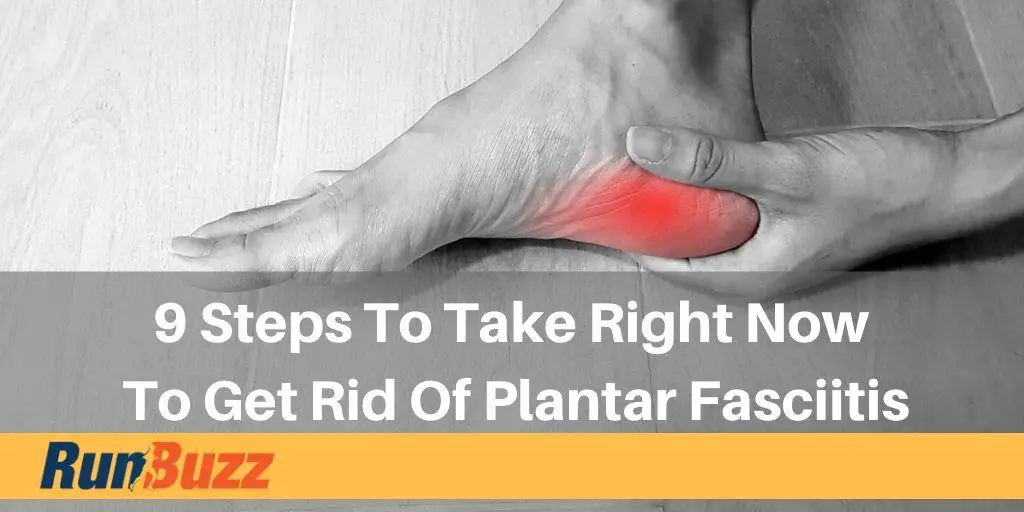Plantar Fasciitis, is a common overuse injury that, unfortunately impacts a lot of runners. And, it can be tricky to get rid of. To make matters worse, many runners who develop plantar fasciitis overlook the early signs of injury or fail to take the necessary steps that could prevent it from getting worse.
But, when addressed early, plantar fasciitis is fairly easy to resolve especially if you use a multi-pronged approach.
In this article, I share 9 steps that you can take right now to get rid of Plantar Fasciitis.
Disclaimer: This article is written from the perspective of a running coach who has worked with numerous runners to address the issue before the medical intervention was needed. This information should not be interpreted as medical advice, but rather training advice. Please consult a physician or physical therapist if you are unsure what type of injury you may have or you are in severe pain. This article is intended for those who have not reached a point where they think medical assistance is needed.
Amazon “affiliate link” disclosure: As an Amazon Associate I earn from qualifying purchases. This just means that when I link to products on Amazon and you purchase something from that link, I may get a small commission (it doesn’t cost you anything more). All opinions are my own.
- Symptoms of Plantar Fasciitis
- What causes Plantar Fasciitis?
- How long does it take to heal Plantar Fasciitis?
- 9 simple steps to help get rid of Plantar Fasciitis fast
- 1. Take 2-3 initial days off to focus on soothing inflammation of the plantar fascia
- 2. Ice frequently during the first few days of initial pain and after runs
- 3. Avoid going barefoot and start wearing recovery shoes or recovery sandals
- 4. Replace, reduce or eliminate dress shoes at work
- 5. Temporarily cut running and training volume by at Least 50%
- 6. Strength training and stretches for Plantar Fasciitis
- 7. Massage and rolling for Plantar Fasciitis
- 8.Temporary use of plantar fasciitis inserts for running
- 9. Return to previous training levels slowly
- Some final advice on how to get rid of Plantar Fasciitis
- When to see a doctor
Symptoms of Plantar Fasciitis
Plantar fasciitis (PF) is inflammation of the plantar fascia tissue that connects your heel bone to your toes. One of the classic symptoms of plantar fasciitis is pain and tightness in the heel and arch.
Characteristics of pain caused by Plantar Fasciitis
- Dull or sharp pain in the heel and arch
- It can give off a burning sensation
- It can develop slowly or come on suddenly (usually after intense training, running or jumping)
- You can feel pain in the morning as you take your first steps but as the day continues, the pain loosens up
- It can occur after long periods of sitting or standing, and when going upstairs
What causes Plantar Fasciitis?
Plantar Fasciitis can affect runners of any experience level for a number of reasons:
- Rapid increase in running intensity, distance, or frequency
- Not following the right training plan for your experience level
- Poor running mechanics
- A sudden change in running surface
- Ignoring early signs of heel and arch pain
- Inadequate footwear
- Lack of stretching and tight muscles
- Aggressive hill training, especially downhill running
How long does it take to heal Plantar Fasciitis?
Plantar Fasciitis is a common running injury that can be very difficult to get rid of.
Depending on the severity of symptoms, the recovery process may take a couple of weeks, around 6 months or even more than a year.
The earlier you take action against plantar fasciitis, the faster you’ll heal and get back to training.
9 simple steps to help get rid of Plantar Fasciitis fast
1. Take 2-3 initial days off to focus on soothing inflammation of the plantar fascia
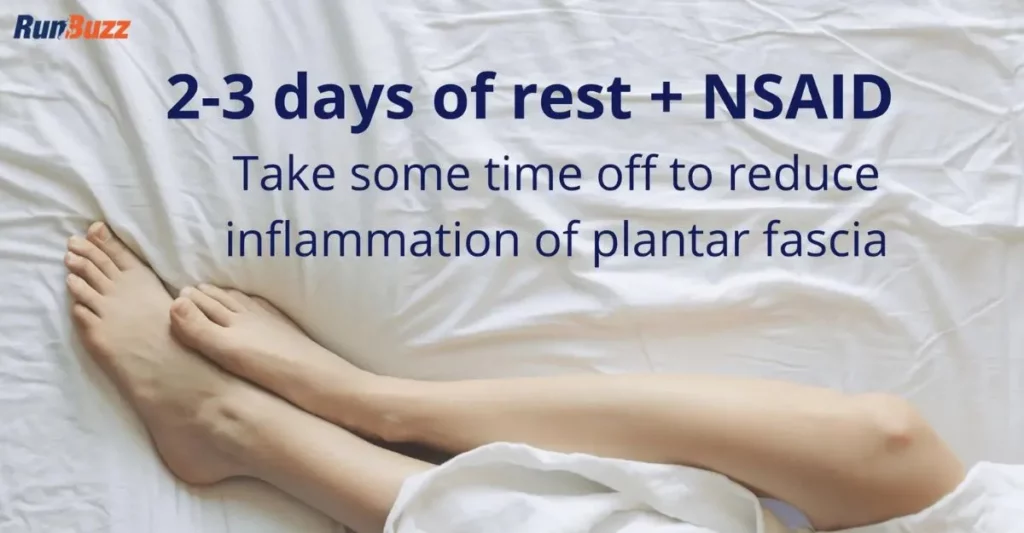
Plantar Fasciitis occurs when there are little micro-tears that have become inflamed and as a result painful. Plantar Fasciitis is not an injury where total rest will help.
For example, I struggled with Plantar Fasciitis myself and took several months off from running. It came back the day after I resumed running!
But, by taking a few days off as soon as you notice that initial heel or arch pain, you can help reduce that early-stage inflammation and jump-start the healing process. Then you can move on to other steps to help you heal faster.
During the first day or two of injury onset, using an NSAID (anti-inflammatory) is OK and can help reduce initial inflammation, but NSAIDs should not be used long term or to ‘mask pain’ while running with plantar fasciitis.
2. Ice frequently during the first few days of initial pain and after runs
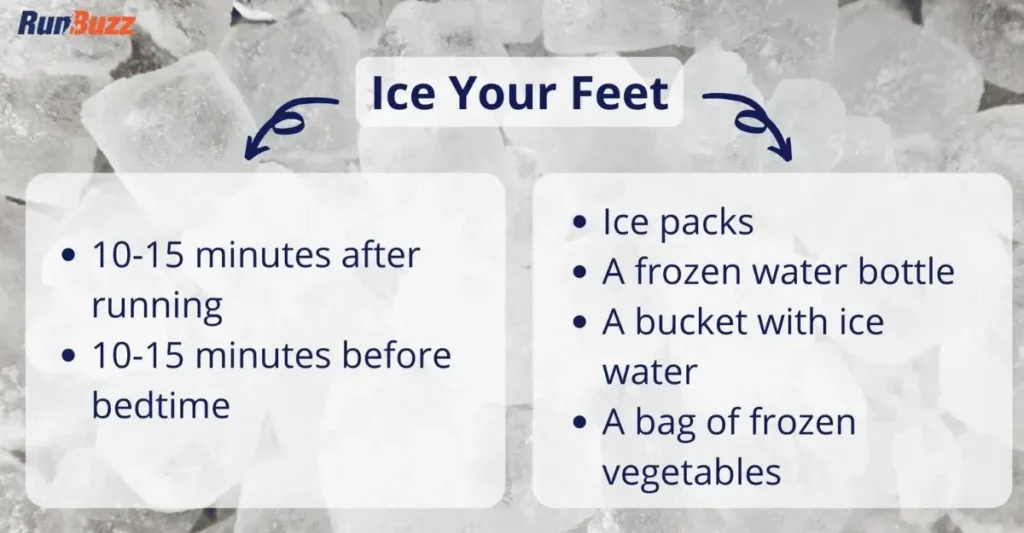
During the first few days of noticeable pain, ice your feet for 10-15 minutes a few times per day. You can use a frozen water bottle, ice packs or even frozen bags of peas to help apply ice to the area.
Ice helps reduce the inflammation and can help reduce the pain. Again, we want to help settle the plantar fascia, and icing is not as helpful after those initial few days.
3. Avoid going barefoot and start wearing recovery shoes or recovery sandals
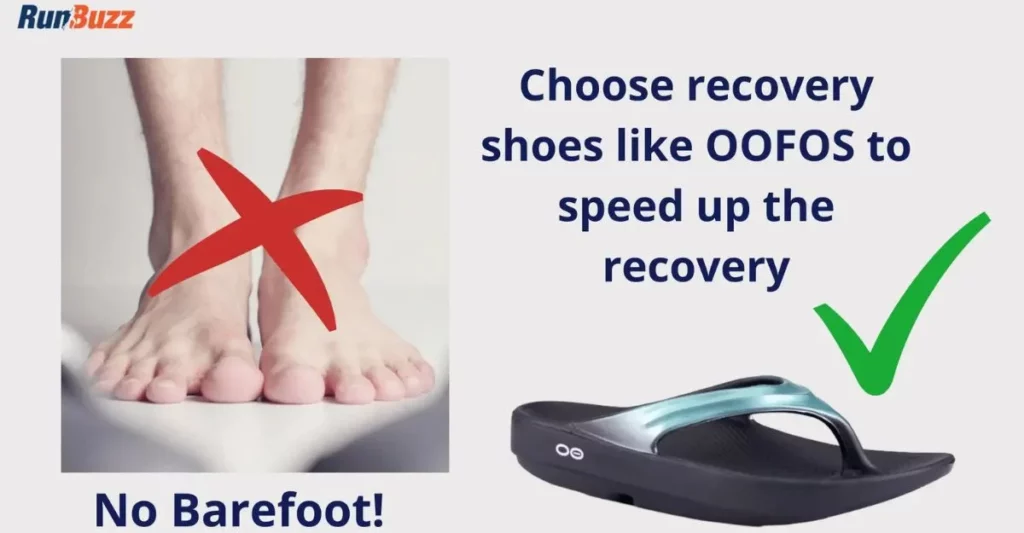
Going barefoot puts added stress on your newly injured feet. Instead, consider purchasing a pair of recovery shoes to get rid of plantar fasciitis faster.
Oofos are the best recovery shoes for plantar fasciitis. Wearing Oofos feels amazing even if they are not injured! I wear mine after long runs or lounging around the house.
Seriously, get Oofos! You will thank me later, injured or not.
4. Replace, reduce or eliminate dress shoes at work

Along the lines of recovery shoes, what we wear at work can aggravate or even cause Plantar Fasciitis.
Flat or high heeled shoes are not your friend when you have Plantar Fasciitis. Flat shoes do not support your arch, and high heels place tremendous stress on your arches. Hard sole shoes are also tough on your feet,
If possible, see if you can get permission to wear shoes with more support or even your running shoes.
Getting out of my work shoes was right up there in my list of things that helped me the most during my recovery.
At the bare minimum consider adding in temporary plantar fasciitis running insoles to help provide additional cushioning. Again, NOT permanently, just use them to help transfer the pressure somewhere else so your plantar fascia has time to heal.
(Read more about plantar fasciitis inserts for running below)
5. Temporarily cut running and training volume by at Least 50%

When a coaching client first presents with heel or arch pain, the first thing I do is temporarily cut volume by at least 50%.
With most cases of plantar fasciitis (unless a tear is involved), you can continue to run unless pain is severe to the point where running is no longer fun or your form is negatively impacted.
Cutting running volume in half, allows you to continue training but giving your body time to recover. By taking you back to pre-injury training loads (and then some for added measure), we can prevent the injury from getting worse, while allowing your body to still remain strengthened and heal.
If you can tolerate it, continuing to run will help you heal as long as the workload is significantly reduced.
6. Strength training and stretches for Plantar Fasciitis
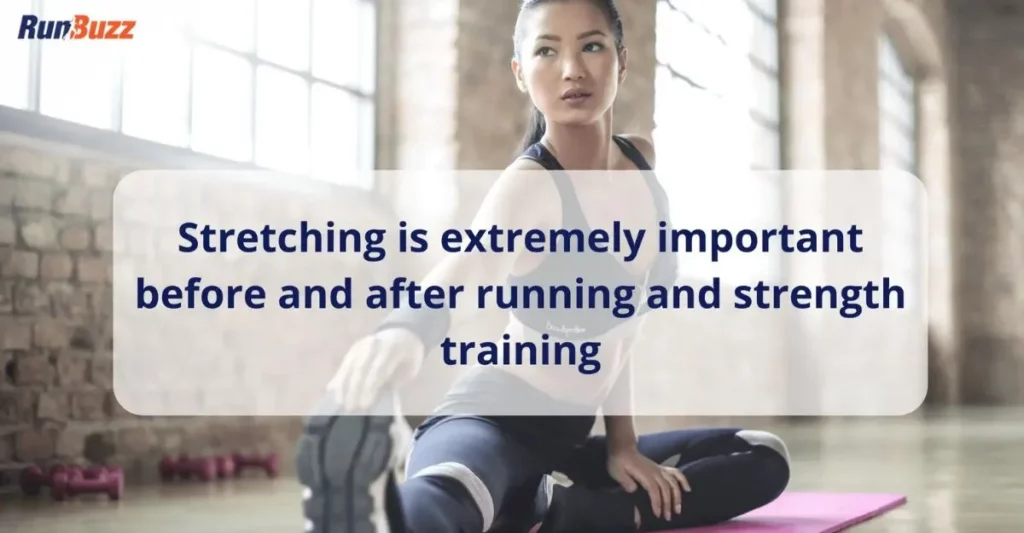
In order to get rid of plantar fasciitis, proper stretching techniques are crucial. Once the pain starts to settle, we can start introducing specific exercises that help build strength and loosen up your lower legs.
- Exercises like single leg balance drills, and calf stretches can help increase flexibility and strenth to take the pressure off your fascia.
- Specific exercises that strengthen the minor muscles in your feet can help reduce the pressure on your plantar fascia.
- Here is a great video, where you can learn more about stretching and its impact on plantar fasciitis as well as some stretching exercises that you can use to help stretch your plantar fascia.
Stretch regularly for better flexibility and faster recovery!
7. Massage and rolling for Plantar Fasciitis
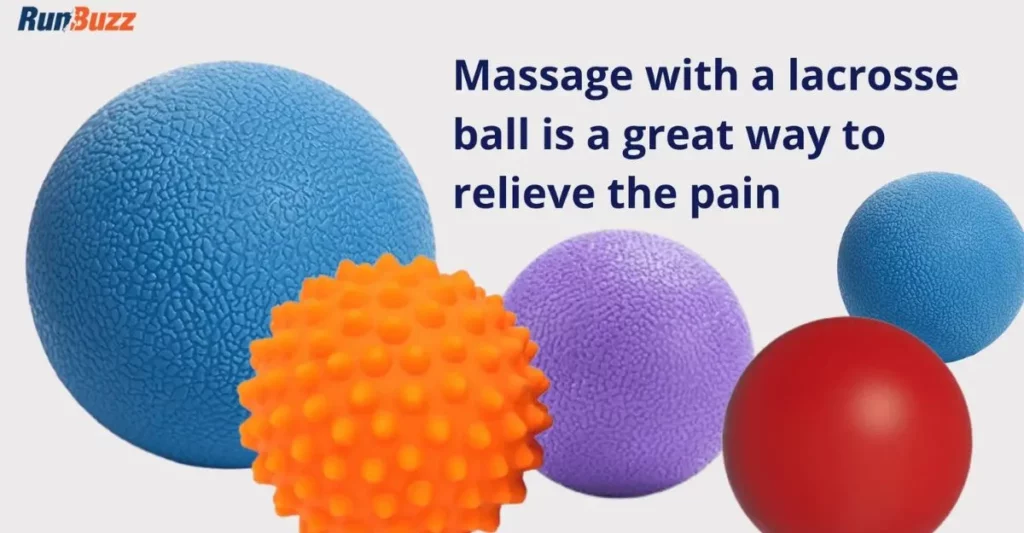
To help keep the fascia loose and to help with the healing process, applying a cross-fascia massage using your hands, or massage ball can help.
To do this, instead of massaging along the length of your foot’s arch, you massage or rub your feet perpendicular to the fascia, or from inside of your foot towards the outside.
I recommend that you do this as often as you can.
In addition to using your fingers for massage, you can use a lacrosse ball or tennis ball to loosen the fascia. I found that a lacrosse ball worked best for me because a tennis ball was too forgiving.
Again, massage your feet often as you can to help prevent plantar fasciitis as well as recover from it.
8.Temporary use of plantar fasciitis inserts for running
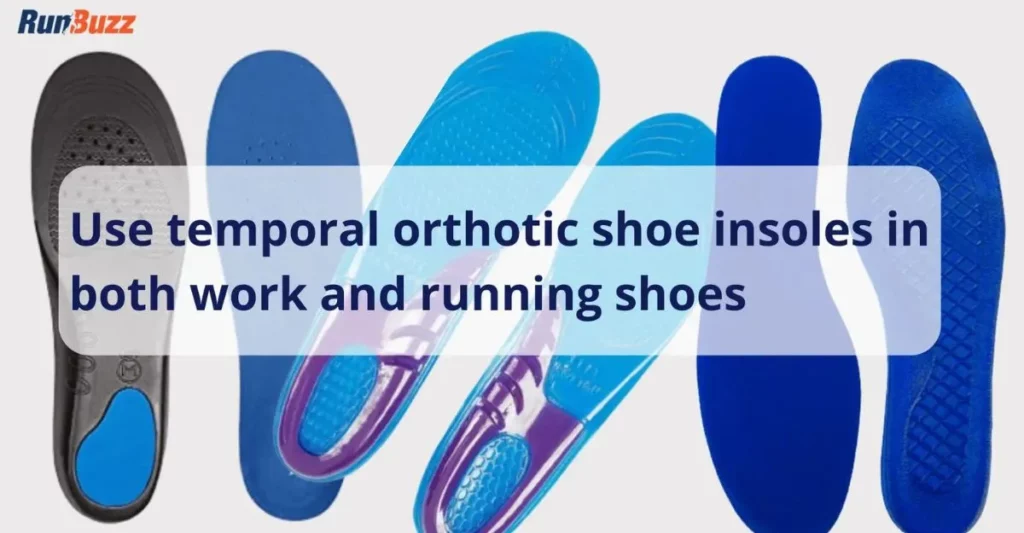
If you suffer from severe pain in the arch of foot, you may wonder whether plantar fasciitis inserts for running can make a difference or it’s just an advertising myth.
Unless a runner has a very specific foot anatomy that requires significant correction or arch support, I am generally not a fan of ‘shoe store’ custom-molded shoe inserts. That does not apply to most runners.
If a runner follows a sound training program with a conservative ramp up and resistance training, the vast majority of runners do not need them.
I actually had a very well known sports medicine doctor actually remove and throw my shoe store inserts into a trash can.
Plus, I have found that if you do not ease your way into a custom-molded insert (which uses hard plastic to hold the mold) you can actually increase your chance of injury!
However, when an injury occurs, a temporary, cheap over the counter foot insert for PF like this one can work wonders.
The value of the temporary plantar fasciitis running insoles is not in the support they provide, but rather the temporary change they have on the pressure and shock absorption of your foot when walking or running.
In other words, they temporarily remove the pressure off your current location and transfer that shock absorption to a healthier part of your foot, giving your foot time to heal. It is NOT a long term solution and should be used in both work and running shoes.
I have found that using a temporary, and I mean temporary insert has been an integral part of helping myself and my coaching clients, get rid of early onset Plantar Fasciitis.
9. Return to previous training levels slowly
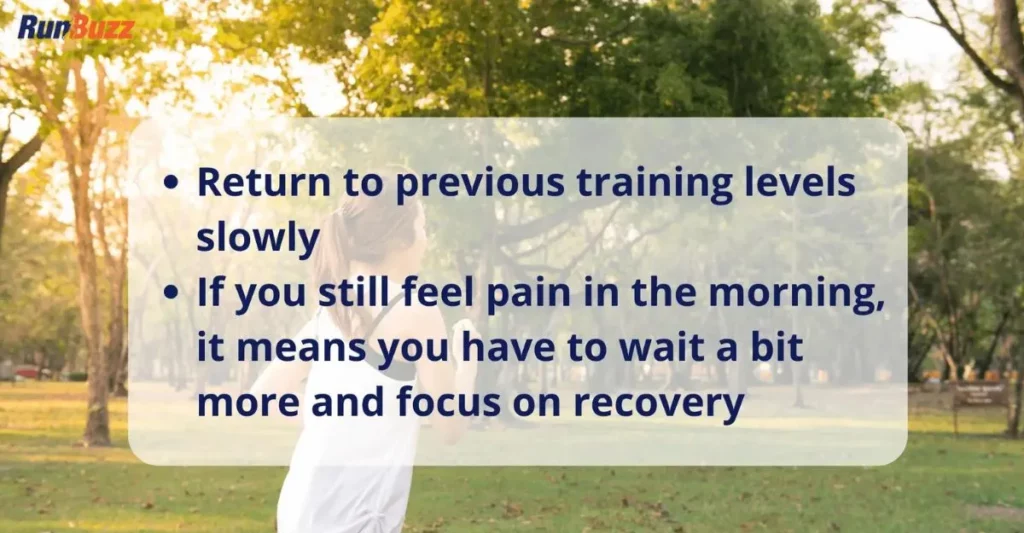
Once your heel and arch pain resolves (or below a 2 on a pain scale from 1-10), you can slowly return to your pre-injury level of training.
The best way to do this is to follow a return to running program and slowly increase your training load.
As you do this, evaluate your pain level along the way, especially the next morning as you get out of bed. If your pain does not get worse or drops, you can handle a new level of training volume.
If your pain gets worse, you are not ready and need to step back and continue your recovery.
Don’t be surprised if you have some days that are better than others pain levels fluctuate but the overall pain trend should be improving as you go through this process.
Some final advice on how to get rid of Plantar Fasciitis
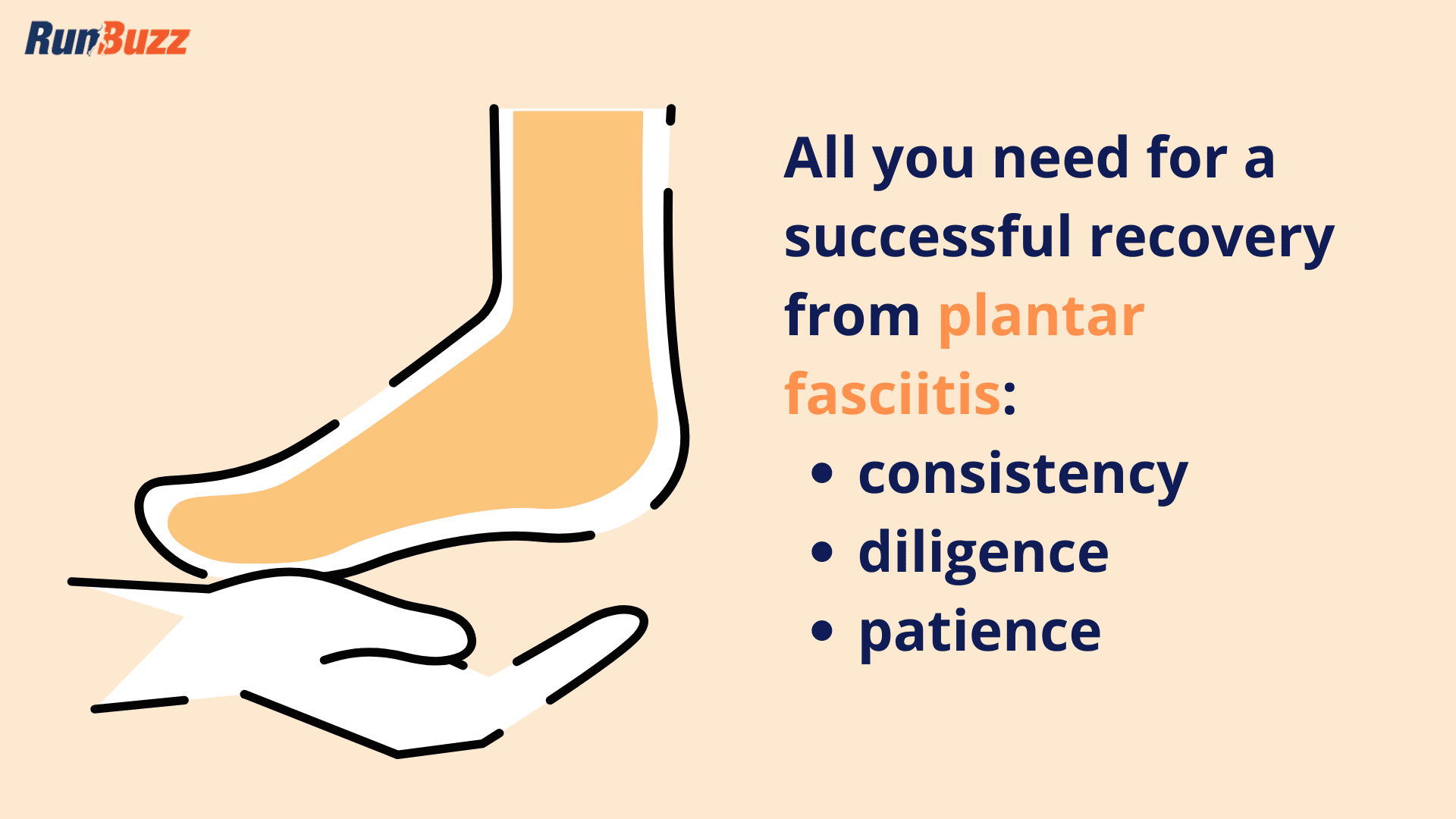
There are lots of so-called remedies out there on how to get rid of plantar fasciitis. So much so it drives me crazy.
To get rid of it, you need to be consistent, diligent and understand that it can take several weeks to get over it. You need to be methodical and patient and you should treat your recovery as if it is your main training focus.
Getting over Plantar Fasciitis is a process, and the sooner you start the process, the more likely you will achieve pain-free running.
I have helped dozens of runners who specifically had Plantar Fasciitis and in almost every case, one specific product or tip did not work. It was a combination of several things including the training deficiencies that caused it.
One of my past clients, Carrie, came to me with Plantar Fasciitis.
During our initial coaching call, I quickly identified that she was ramping up for her half marathon too fast. We took immediate steps (like those in this article) to get ahold of it early.
I quickly modified her training and in her case, we were successful at resolving her Plantar Fasciitis in about two weeks.
But she went all-in with her recovery putting everything else on hold.
When caught and addressed early, it usually can be resolved quickly. If you continue to run through the pain, the injury can become chronic and take weeks, months, and even years to get.
When to see a doctor
If pain is severe enough that you can’t function normally in your day to day activities, or you have gone through all the steps mentioned above, and the pain remains – don’t hesitate to consult a sports medicine doctor or physical therapist.
Sometimes the injury is much more complicated than expected and the accurate diagnosis may shed a light on the underlying cause of pain in the heel and arch.
- About the Author
- Latest Posts

Steve Carmichael is a running coach, sports performance coach, nutrition coach and has been a recreational runner for over 18 years. Steve holds multiple certifications as a certified running coach through the RRCA and USA Track and Field as well as he is a NASM certified personal trainer, and PN1-L1 certified nutrition coach.
Steve has been coaching since 2010 and has helped thousands of runners online and in the Central Ohio area maximize performance and run injury-free.
Steve is the founder of RunBuzz and Run For Performance.com. If you are interested in working with Steve though his online running and strength coaching services, feel free to reach out.

